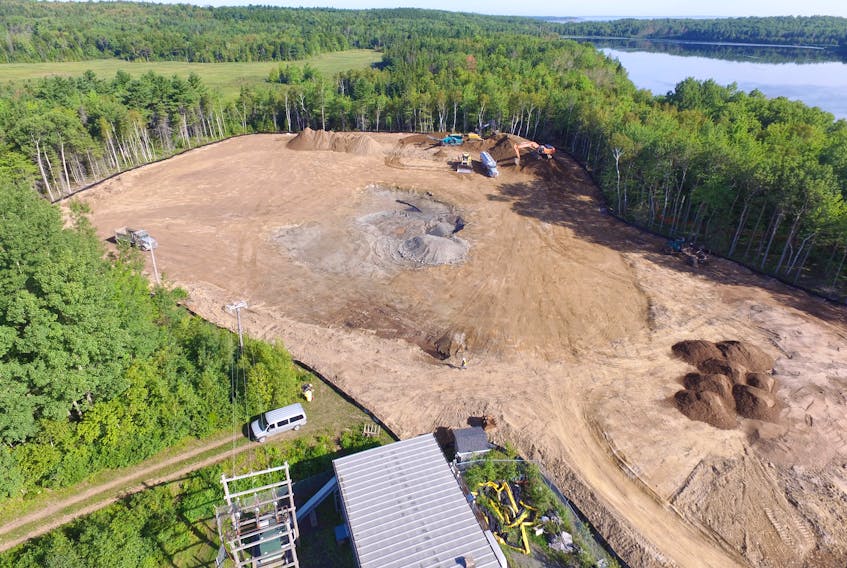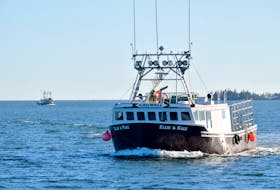Boat Harbour, N.S.
Ken Swain wants to see Boat Harbour returned to a tidal estuary as soon as possible so the First Nations elders who saw it before it was contaminated can see it as they did when they were children.
Red tape may be the only thing slowing his efforts.
Swain led the cleanup of the Sydney Tar Ponds. Nova Scotia Lands has put him in charge of remediating Boat Harbour. The massive task involves turning back the clock on 60 years of effluent contamination to restore what is now in essence a polluted lake back into a pure tidal estuary.
Getting environmental approval for the cleanup appears to be the only thing that has the potential to slow the process, Swain said.
“We were in a position to have a proposed plan ready to submit to Nova Scotia Environment in August,” he said. “We could not submit it because there has to be a determination as to whether a federal environmental assessment is required before we can submit our proposed plan to Nova Scotia Environment.”
The Canadian Environmental Assessment Agency has concluded that the Boat Harbour Remediation Project is a designated project under the The Canadian Environmental Assessment Act (also known as CEAA 2012) and therefore must go through a process which will determine whether a full federal environmental assessment is needed.
“On August 22, 2018, the agency requested that the proponent provide a project description, so the Agency can determine whether an environmental assessment is required under CEAA 2012,” Karen Fish, who speaks for the Canadian Environmental Assessment Agency, wrote in an emailed response to questions.
In the next couple weeks Swain expects to file a project description to the Canadian Environmental Assessment Agency. After that, the federal agency will have up to 45 days, including 20 days of public comment, to respond with whether a full assessment is going to be required.
Fish said that once her agency receives and accepts the completed description, it will post a notice on its registry website.
“A summary of the project description will also be posted along with a notice of a 20-day public comment period on the designated project and its potential for causing adverse environmental effects,” she said.
The Nova Scotia Department of Environment has already deemed that the remediation requires a Class 2 assessment from the province which typically takes about 275 days to complete. That process won’t begin though until the official proposal is submitted.
In April 2018 Environment Minister Iain Rankin said his department determined a Class II process is necessary for the cleanup project because of its size and multiple contaminants in the soil and water.
While that Class 2 assessment would make for a tight deadline to start soon after the January 2020 closure of the Boat Harbour Treatment facility, what has a greater chance of delaying the remediation is the federal involvement.
“It may impact the ability to start the project in early 2020,” Swain said.
Fish said that a federal environmental assessment must be completed within a year. But she noted that time taken by the proponent (in this case Nova Scotia Lands) to complete its work or provide information is not included within the 365-day timeline.
“During this time, the federal timeline is paused but work on the environmental assessment of the project continues.”
There’s also a chance that the federal environment minister could refer the project to a review panel within 60 days of the notice of the commencement of an environmental assessment. This could cause further delays.
An environmental assessment by a review panel needs to be completed within 24 months from the time it is referred to the review panel.
While staff with Nova Scotia Lands want to make sure the project is done properly, Swain said they also want to make sure it’s done in a timely manner.
“We want to start the full-scale implementation as soon as we can,” he said.
Central Nova MP Sean Fraser, who was recently appointed parliamentary secretary to Federal Environment Minister Catherine McKenna, has been watching the file closely.
He said he doesn’t want to see the process delayed but “I want to make sure that it’s dealt with in a responsible way.”
Fraser said if a federal assessment is deemed necessary he would like to see it move forward in harmony with the provincial process in an effort to prevent delays.
When both a federal assessment and a provincial environmental assessment are required the processes are coordinated as much as possible, Fish said.









